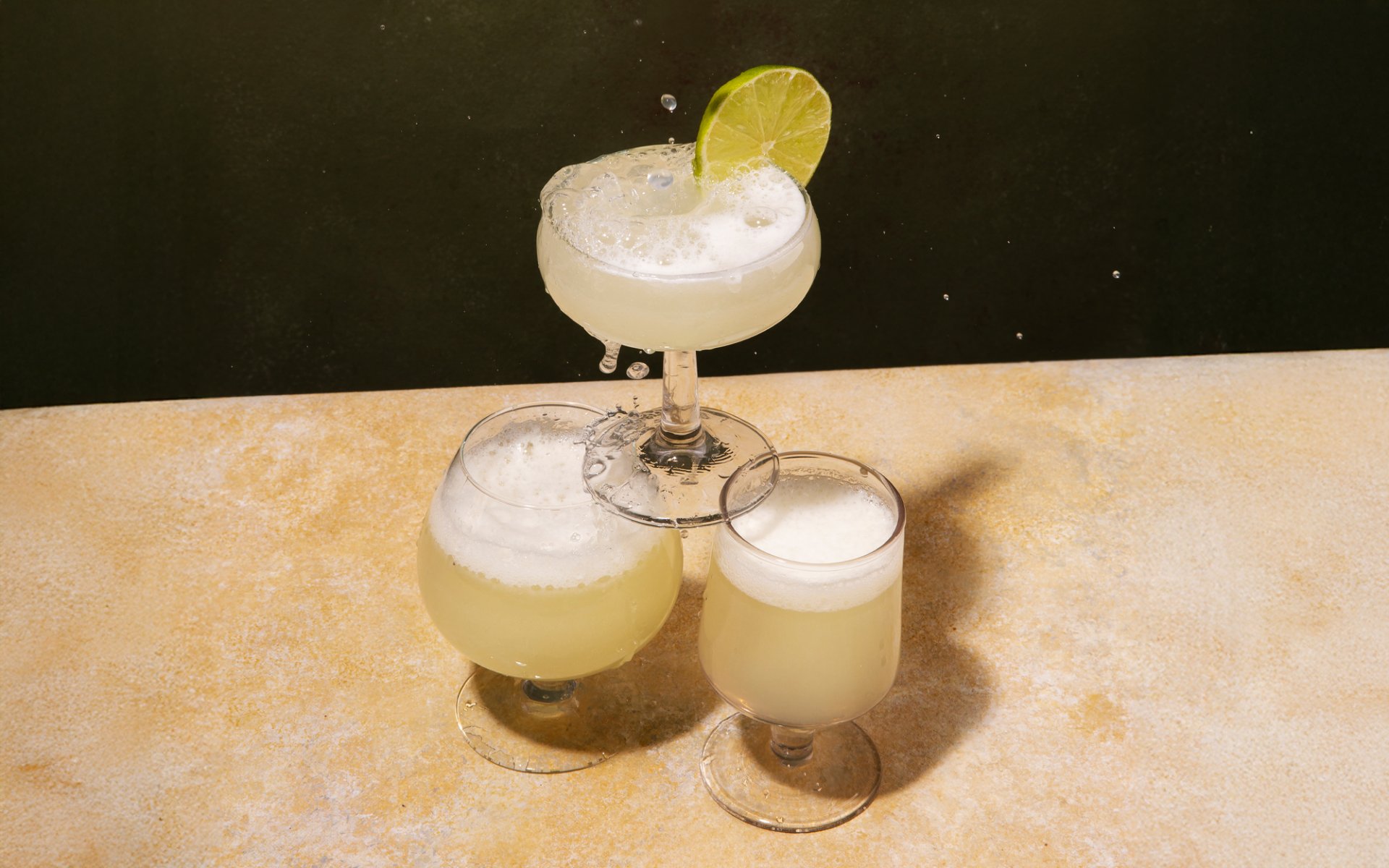Daiquiri

Tracing the History of Daiquiri: A Classic Cocktail Born from Life in Cuba
The Daiquiri is an old cocktail with just four main ingredients: rum, lime juice, sugar or simple syrup, and ice. It is classified under The Unforgettables by the IBA (International Bartenders Association) due due to its long history and sustained popularity. Furthermore, the Daiquiri is one of the six fundamental cocktails featured in The Fine Art of Mixing Drinks by David A. Embury, a highly renowned cocktail recipe book of the 20th century.
The name Daiquiri is shared with a beach and an iron mining village near Santiago de Cuba, a major city in Cuba. This name is from the Taíno language, spoken by the indigenous people of the Caribbean. Cuba was under Spanish colonial rule for several centuries (1492-1898) and began to be influenced by America from 1854. This village also became a central point for the American military's invasion of Cuba during the Spanish-American War in 1898.
Consequently, it was common for many Americans and Spaniards to reside and work in Cuba. The theory of the Daiquiri's creation emerged as historians investigated stories related to these individuals. The most widely accepted theory is that the Daiquiri was invented during the Spanish-American War by Jenning Cox, a mining engineer working in Cuba.
One day, Cox hosted a party at his residence near the Daiquiri mine and attempted to mix punch for his guests. However, he suddenly ran out of gin. He rushed out to buy some but could only find rum. He brought it back and began mixing it with lime juice, sugar, and ice, serving it in a tall glass, thus creating the original Daiquiri.
The Daiquiri's Journey to America and its Original Recipe
The Daiquiri was introduced to America in 1909, during a visit by the battleship USS Minnesota to the Cuban coast. Captain Charles Harlows and medical officer Lucius Johnson had the opportunity to taste Cox's Daiquiri. They then took the recipe back and popularized it at the Army & Navy Club in Washington, D.C., which at the time was filled with veteran members. The reputation of the Classic Daiquiri spread considerably among Americans. A Daiquiri recipe similar to Cox's was first published in Drinks by Jaques Straub in 1914.
The Daiquiri recipe in Drinks by Jaques Straub (spelled as Daiguiri in the book) listed the ingredients and method as follows:
- jigger (1 ounce) lime juice
- jigger (0.5 ounces) rum
- 1 teaspoon granulated sugar
The method involves shaking all ingredients with ice and pouring them into a cocktail glass. This approach to making a Classic Daiquiri remains a common practice today, often served in chilled stemmed glasses like Coupe, Martini, or Margarita glasses, and garnished with a lime wheel.
El Floridita, Hemingway, and the Frozen Daiquiri
Later, there's the story of a Catalan immigrant from Spain named Constantí Ribalaiga i Vert. He immigrated to Havana, the capital of Cuba, as a child and began working in a Catalan-style coffee house. He eventually became a highly skilled bartender and ultimately owned the coffee house in 1918, renaming it El Floridita. This establishment also served the Classic Daiquiri. During the period of 1920-1933, when America enacted prohibition laws banning the production, import, and distribution of alcohol, Cuba became a significant destination for tourists eager to enjoy alcoholic beverages, and El Floridita was one of the most famous bars.
Between 1930 and 1939, a distinguished guest visited: Ernest Hemingway, the famous American writer, who had the chance to taste the Classic Daiquiri at this bar. Later, Vert adapted this original recipe, inspired by Hemingway, by reducing the sugar, adding an extra shot of rum, and incorporating grape juice. As this was a period of advancements in refrigerators, electric blenders, and ice manufacturing, the menu became even more creative by blending ingredients with ice, transforming it into a Daiquiri in the form of a Frozen Cocktail, later known as Frozen Daiquiri.
Subsequently, this cocktail became a new item on El Floridita's menu, named Papa Doble or Hemingways Special, which inspired new types of Frozen Daiquiris, such as Strawberry Daiquiri, noted for its vibrant red blended fruit appearance. All these stories also appeared in Hemingway's writings.
The Daiquiri in the World War Era and Presidential Favorites
The Daiquiri's popularity grew rapidly in the 1940s (1940-1949), coinciding with World War II. At that time, expensive spirits like Whiskey and Vodka became scarce, making rum more prominent. This was due to President Franklin D. Roosevelt's opening of trade and tourism relations with Latin America, Cuba, and the Caribbean islands. Rum-based drinks thus became fashionable, which led to the Daiquiri becoming a very famous cocktail. It also became the favorite drink of President John F. Kennedy.


